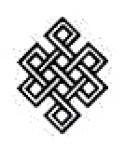
Overview
GeroScience is a leading international journal focused on the biology of aging and the pathophysiology of age-related diseases.
- Official journal of the American Aging Association.
- Encompasses a broad range of geroscience fields, including biogerontology, neuroscience, cardiovascular research, cancer research, pharmacology and healthy longevity medicine.
- Prioritizes biomedical research with significant implications for aging and disease mechanisms.
- Aligns with the priorities of the NIA, including a strong focus on Alzheimer's Disease and Vascular Cognitive Impairment and Dementia.
- Boasts an editorial board of globally renowned experts in aging and related disciplines.
- Editors-in-Chief
-
- Veronica Galvan,
- Zoltan Ungvari
- Impact factor
- 5.6 (2022)
- 5 year impact factor
- 5.7 (2022)
- Submission to first decision (median)
- 5 days
- Downloads
- 1,192,249 (2023)
Societies and partnerships

Latest issue
June 2024 |Special Issue: Animal Models for Geroscience, Special Issue: Aging in Companion Animals and Special Issue: Understanding the impact of aging on the susceptibility and response to COVID-19 infection
Latest articles
Journal updates
-
GeroScience Outstanding Publication Awards
Please read more about the awards for outstanding original research papers and reviews in the field of aging here.
-
Editor's Pick: Péter Bay
Read for FREE articles picked by one of the journal Editors
-
Editor's pick: Matthew J. Yousefzadeh
Read for FREE articles picked by one of the journal Editors
-
Editor's pick: Jorge Quarleri
Read for FREE articles picked by one of the journal Editors
Journal information
- Electronic ISSN
- 2509-2723
- Abstracted and indexed in
-
- AGRICOLA
- BFI List
- BIOSIS
- Baidu
- Biological Abstracts
- CAB Abstracts
- CLOCKSS
- CNKI
- CNPIEC
- Chemical Abstracts Service (CAS)
- Dimensions
- EBSCO
- EMBASE
- EMCare
- Google Scholar
- INIS Atomindex
- Japanese Science and Technology Agency (JST)
- Medline
- Meta
- Naver
- OCLC WorldCat Discovery Service
- Portico
- ProQuest
- PubMedCentral
- Reaxys
- SCImago
- SCOPUS
- Science Citation Index Expanded (SCIE)
- TD Net Discovery Service
- UGC-CARE List (India)
- Wanfang
- Copyright information











